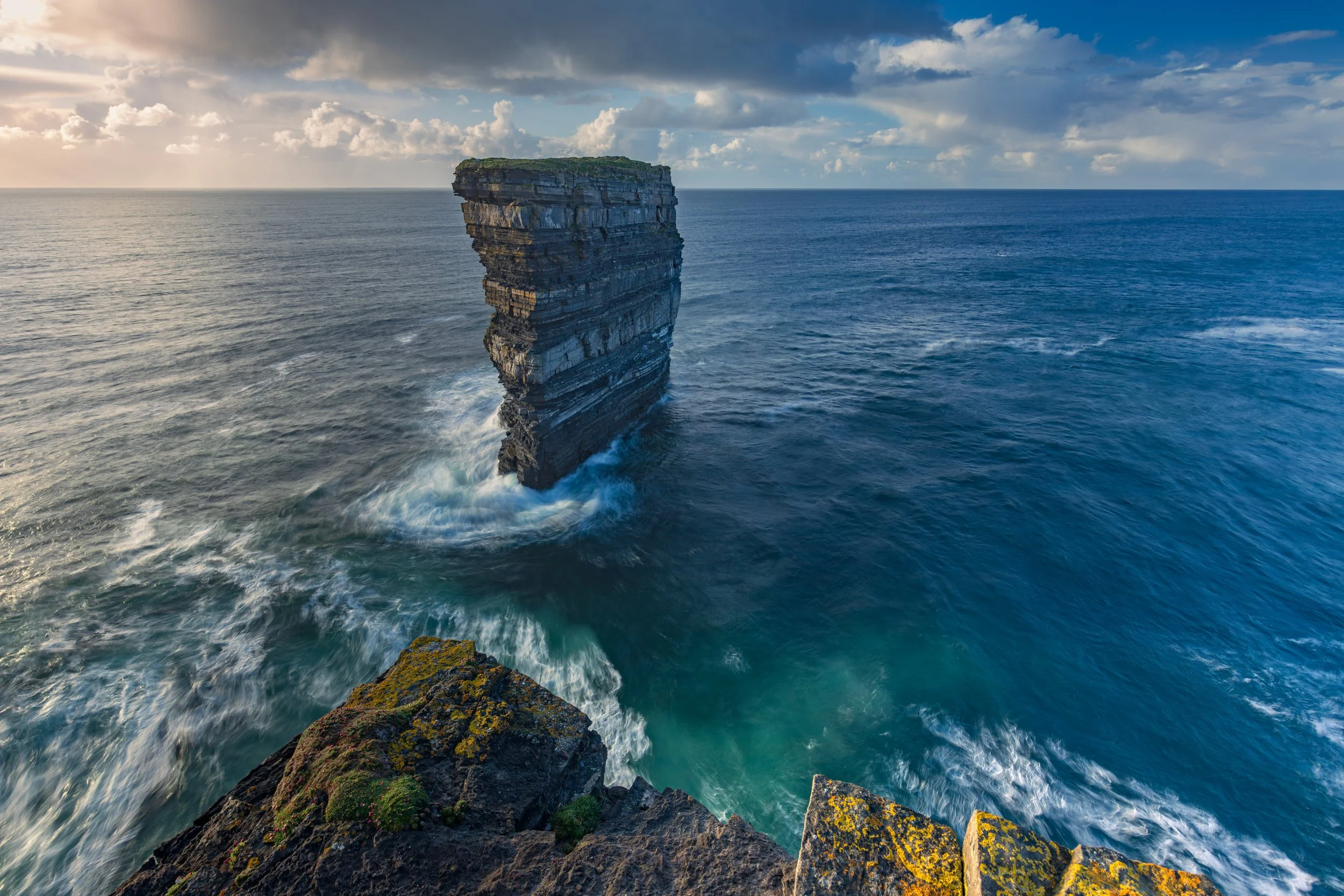This Photo Haunting Me for 5 Years... Until Now!
It’s been five years since I last photographed Downpatrick Head, a prominent feature of Ireland’s rugged west coast. Located in County Mayo, this spot is known for its dramatic sea stack, Dun Briste, which stands isolated from the cliffs, layered with strata showing millions of years of geological activity. A location like this draws photographers back time and time again, not just for the images, but for the experience.
My last visit here resulted in being a costly trip, my filters took a dive over the edge, resulting in a missed opportunity for the type of shots I wanted to take, but this time would be different
On this return, I was joined by my good friends Diarmuid and Patrick. We’ve shared many trips together, and this one was shaping up to follow the usual formula: a bit of craic, some unpredictable weather, and hopefully a handful of strong images. This time, though, I had a specific motivation. During my last visit here, I lost my entire filter setup. It was frustrating, but also a lesson in gear management. I returned this time not just to photograph the scene again, but to do so with a more secure setup, my new holder now attaches firmly, eliminating the flimsy clip I once relied on.
Diarmuid and I were the first to arrive. The conditions at midday were harsh. Strong sunlight and hard shadows are never ideal for landscape work, but they’re not without opportunity. Instead of waiting for golden hour, I used the time to refine compositions. With a subject as well-formed as Dun Briste, it's not hard to fall into cliché angles, so my aim was to focus more on what I could use in the foreground. Jagged rock formations along the cliff edge gave me enough variety to experiment.
Foreground is essential in seascape work. It draws the viewer into the scene and anchors the composition. At Downpatrick Head, the challenge is in balancing the dramatic vertical presence of the stack with something leading into the frame. I found one position that allowed me to frame the stack with diagonals of fractured cliff lines that echoed the stratification in the rock column itself. That visual repetition helped tie the frame together.
As the afternoon progressed, the light stayed strong. While not what you’d hope for in terms of drama, the conditions were stable enough to warrant putting the drone up. From the air, Downpatrick Head reveals more context. The outline of the cliffs and surrounding headlands take on new geometry. Aerial perspectives are often undervalued, but here, it completely reframed the scene for me. Instead of isolating elements, I could look at relationships—how the stack sits in line with other landforms and how the erosion patterns have shaped the entire coastline.
Eventually, Patrick arrived. As we caught up, a subtle shift occurred, the light started to break in the distance. I noticed crepuscular rays forming over the far headlands. I switched to a long lens and worked quickly to capture the play of light and shadow as sunbeams cut through the clouds. Moments like these can vanish quickly, so the goal isn’t to overthink, it’s to execute.
This distant light show turned out to be the peak of the evening. Within half an hour, the weather turned. Rain crept in from the Atlantic, subtle at first but quickly building. Any hope of sunset was gone. Still, the outing was far from wasted. One of the most important lessons in landscape photography is separating the quality of the light from the quality of the experience. We got good images, but more than that, we got time in the field, scouting, refining, and responding to the conditions.
Wet but content, we made our way back to the vans as the rain intensified. That night, parked up with a few beers and plenty of chat about photography, it felt like the proper beginning to the trip. The familiarity of the place and the company made it less about ticking off another shot and more about reconnecting with the process.
Returning to a location after years can serve as a benchmark for your progress. The images may not always be better, but your understanding of the scene, the light, and your own creative response should be. I approached the stack differently this time—not because it had changed, but because I had.
Downpatrick Head remains an iconic stop, not just for the visuals, but for the lessons it offers. Landscape photography isn’t about constant novelty. It’s about depth, return, and developing your voice by revisiting the same themes with more clarity.
You can see the images I took from this shoot, and watch the story unfold in the video below





















